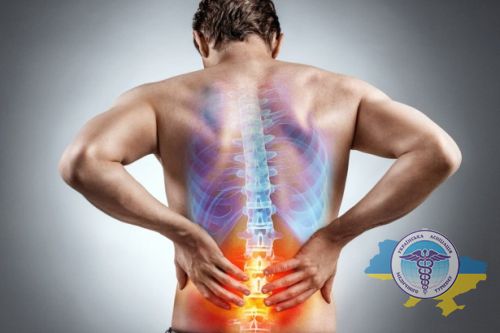Herniated disc treatment abroad

Intervertebral hernia is a dangerous pathology that has a serious effect on the vital functions of the human body. This is a fairly common disease, which in case of untimely or insufficient quality treatment can lead to serious consequences, up to disability.
Treatment of intervertebral hernia abroad helps to achieve effective results in a short time without compromising the patient's standard of living.
Important! Foreign medical centers have everything necessary for a complete cure: innovative equipment, rehabilitation wards, modernized surgical departments, which employ highly qualified specialists in spinal surgery and orthopedic doctors.

Want to know how much the treatment costs?
Answer a few questions and get preliminary information about the cost of diagnosis and treatment!
Benefits of Herniated Disc Treatment Abroad
Home-country medicine is developing, but despite the high results in improving surgical techniques, the percentage of complete recovery of patients is not high enough and only 68% achieve satisfactory results.
According to statistics, in the countries of the post-Soviet space, from 60 to 80% of patients who underwent surgery become disable. This is due to an untimely diagnosis and, accordingly, a late start of treatment, an insufficiently high level of medical care in small settlements, certain difficulties in obtaining a referral to specialized medical centers, and the inability to undergo full rehabilitation.
In specialized foreign clinics, minimally invasive interventions are used, which are effective in 90-95% of cases. Treatment of herniated discs abroad is quite effective even in advanced cases, when, in addition to endoscopic surgery, additional procedures are required.
Diagnostics of the intervertebral hernia in foreign clinics

A qualified and timely diagnosis of a herniated disc is carried out using the following procedures:
- Electromyography (EMG). A method for studying the bioelectrical activity of muscle tissue or measuring the electrical activity of a response to stimulation of a specific nerve;
- A research method in which invisible electromagnetic radiation passes through the tissues and internal organs of the body with the transmission of the image on the screen and fixation on the film;
- Computed tomography (CAT or CT). Research methods that combine radiography with modern computer technologies, with the help of which axial or horizontal images (sections) of the patient's internal organs are created. With CT, all parts of the body are visualized, including muscles, adipose tissue, bone tissue, etc. The resulting images are superior to X-ray images in quality and detail;
- X-ray examination using a special dye that is injected into the spinal canal. With this method, diagnostics is performed with detailed visualization of the structure on the images of X-ray images;
- Magnetic resonance imaging (MRI). Research procedure using large magnets, using radio frequency waves and computer technology. At the end of the study, the doctor receives processed information with detailed images of the patient's internal organs.
Specialists in spinal neurosurgery and doctors involved in the musculoskeletal system (orthopedists) are involved in drawing up a detailed plan for the course of treatment.
Based on the analysis of the results of diagnosing a herniated disc, doctors make an informed decision on prescribing the necessary course of treatment for the patient.
Methods for the treatment of intervertebral hernia in clinics abroad
World medical practice shows that for optimal treatment a person does not always need surgery.
Reference! In the overwhelming majority of cases, sparing techniques show the greatest efficiency: acupuncture, drug and physiotherapy, exercise therapy, manual therapy, balneotherapy.
The best foreign medical centers, depending on the current stage of the disease, successfully practice various methods of treating pathology (conservative, minimally invasive, pharmacological). Treatment options are selected individually based on the results of the studies performed.
Minimally invasive surgery
Delayed treatment and symptoms treatment in most cases result n open surgery instead of minimally invasive treatment. Open surgery is accompanied by damage to the ligaments, injury to soft tissues and articular processes of the vertebrae.
In order to minimize damage doctors in foreign clinics try to use minimally invasive techniques, such as:
- Nucleoplasty, in which part of the nucleus of the affected disc is removed using radiofrequency ablation, cold plasma and laser radiation by puncturing the skin under close X-ray control;
- Discogel therapy, during which a special gel is injected into the affected vertebral disc, which reduces the pressure in the disc with the effect of "pulling" the hernia back to its original place;
- Surgical intervention by a robotic surgeon, in which all the necessary manipulations are performed by a doctor by making minimal punctures (not exceeding 1.5 cm), using a robotic system. The movements of the surgeon are processed by the system and executed by the robot smoothly and efficiently. Such operations are carried out with the greatest precision, eliminating the effect of "trembling hands";
- Disk-FX. A technique in which the hernia is removed without blood loss - incisions are not made in this case. An endoscopic instrument removes excess disc content through a minimal puncture, as a result of which the nerve roots are released from pressure, relieving the patient of pain. The surgeon's manipulations are coordinated under direct X-ray control to achieve maximum accuracy of movements;
- Ozone treatment. This method of treatment is effective at an early stage of the disease. During the procedure, ozone injection reduces the size of the herniated disc, while providing a positive anti-inflammatory effect.
The advantages of minimally invasive treatment methods are obvious, since such interventions are short (up to 1 hour), have the fewest contraindications, and have a short recovery period (the patient can leave the clinic on the day of the procedure).
Important! Another positive aspect of such procedures is the immediate removal of the symptoms of the disease and the complete elimination of those factors that supported the development of the pathological process.
Surgical intervention
The following types of operations are performed in leading foreign clinics:
- Discectomy - the affected disc is removed completely or partially, as a result of which there is a restoration of sensitivity on the nerve endings, pain syndrome and the effect of numbness of the limbs are eliminated;
- Spine stabilization is a procedure in which the intervertebral discs are fixed with specially designed support elements (implants, screws, plates). It is carried out in cases where the spinal column, after removing the hernia, cannot sufficiently maintain a stable position;
- Decompression or laminectomy. This procedure is carried out in the immediate vicinity of the affected nerve endings. A fragment of bone tissue is removed, which effectively removes excess pressure and normalizes the blood supply to the nerve. This also eliminates pain syndrome;
- Replacement or prosthetics of the intervertebral disc. Such interventions are performed in cases where, after discectomy, there is a risk of disruption of the stability of the discs located in the immediate vicinity. In order to eliminate possible complications, implantation (implantation of an artificial vertebra) is performed.
Drug therapy
When conducting treatment without surgery, the patient is prescribed non-steroidal anti-inflammatory drugs. The active substances contained in these medicines relieve pain syndromes in the early stages of the onset of the disease, effectively relieve inflammation and edema. With this method of treatment, bone tissue is restored. This method avoids unwanted reactions in the organs of the gastrointestinal tract.
In case of insufficient effectiveness of anesthetics, as well as for individual indications, specialists of clinics for the treatment of intervertebral hernia abroad inject corticosteroids into the sites of disc lesions. This injection method relieves pain, but is mainly used as a symptomatic treatment, because it does not completely eliminate the pressure of the hernial formation on the nerve endings.
Prices for the treatment of intervertebral hernia in clinics abroad
The cost of receiving treatment for each person is determined individually, depending on the country of treatment, the choice of treatment method, the need and duration of postoperative rehabilitation.
Initially, you should undergo diagnostics and pass the necessary tests, after which the specialists will be able to determine the cost of treatment of an intervertebral hernia abroad, taking into account the price of medicines and surgery. It should be borne in mind that the cost directly depends on your decision: the passage of treatment at earlier stages of the disease is much cheaper and less time-consuming.
The estimated cost of diagnostics and treatment in clinics in different countries is shown in the table.
Israel | Germany | Turkey | USA | |
Diagnostic | from $1600 | from $5000 | from $2000 | from $10000 |
Treatment | from $12000 | from $14500 | from $13000 | from $16000 |



